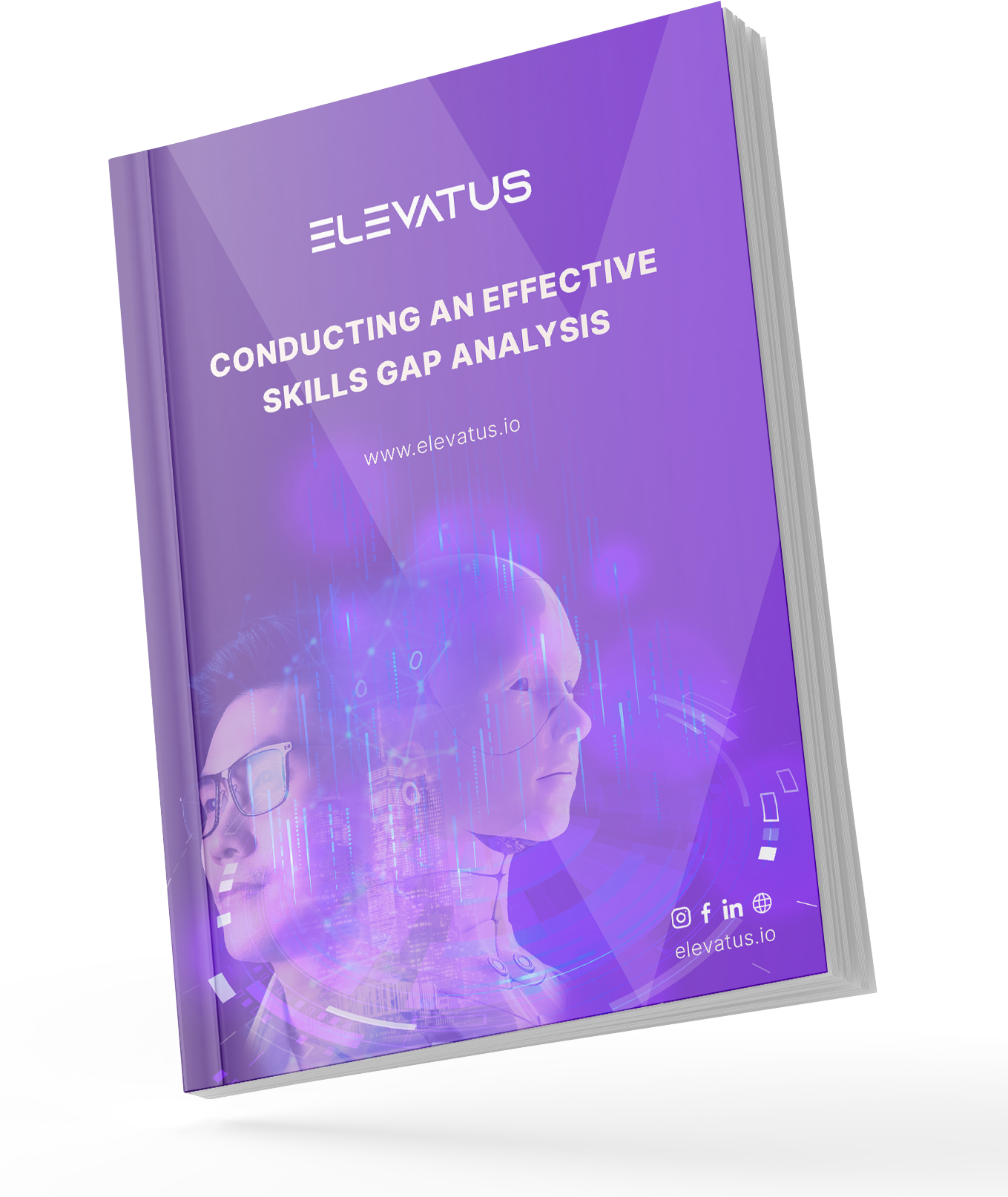
Talent Acquisition
Adapting to Talent Acquisition Trends Through Advanced ATS Capabilities
April 16, 2024



Kiran Kazim
Content Writer
Adapting to talent acquisition trends can feel overwhelming. You’re implementing strategies, but are they truly effective? Are you attracting the right candidates? Just like questioning the impact of your content, you might wonder if your recruitment efforts are hitting the mark. It’s time to explore how advanced ATS capabilities can reshape your approach and deliver the results you’re aiming for.
Discover the latest trends in talent acquisition with confidence and achieve your recruitment goals with ease.
Make the right hires every time
Learn how our award-winning ATS can help you use AI and automation to save time, eliminate manual tasks, and hire at an enterprise scale – but without the complexity.
Show me howTable of Contents
How Advanced ATS Are Shaping the Future of Talent Acquisition


In the fast-paced world of talent acquisition, the only constant is change. The dynamic nature of talent acquisition is driven by various factors, including market trends, technological advancements, and shifting candidate preferences. To stay competitive, businesses must continuously adapt and evolve their recruitment strategies.
One of the key drivers of this change is the digital revolution. With the rise of technology, the way people search for jobs and how companies recruit has shifted dramatically. Online job boards, social media platforms, and digital networking have become integral parts of the recruitment process, requiring businesses to adapt their strategies to reach and engage with candidates effectively.
Another factor contributing to the dynamic nature of talent acquisition is the changing expectations of candidates. Today’s job seekers are more informed and selective than ever before. They expect personalized experiences, transparent communication, and opportunities for growth and development. This shift in candidate expectations has forced businesses to rethink their approach to recruitment and focus more on building relationships with candidates.
This is where applicant tracking systems with advanced capabilities (ATS) play a pivotal role. These cutting-edge solutions are not just about processing applications; they are strategic tools that can transform the way businesses approach recruitment. Advanced applicant tracking systems leverage technologies like artificial intelligence (AI), machine learning (ML), and big data analytics to streamline recruitment processes and improve efficiency.
For example, EVA-REC is the #1 award-winning applicant tracking software trusted globally, designed to streamline the entire hiring process – from acquire to hire. It automates time-consuming tasks such as resume filtering and interview scheduling and enables efficient team collaboration and candidate evaluation through advanced analytics, all while showcasing your incredible employer brand.
One of the key challenges in talent acquisition is the increasing volume of applications. Advanced applicant tracking systems like EVA-REC help address this challenge by automating repetitive recruiting tasks, such as resume screening and candidate communication. This not only saves time but also ensures that recruiters can focus on more strategic aspects of recruitment, such as building relationships with top talent.
Furthermore, an advanced ATS enables businesses to stay ahead of the curve by leveraging data analytics to identify trends and predict future hiring needs. By analyzing data on candidate sourcing, application conversion rates, and hiring success metrics, businesses can make informed decisions and optimize their recruitment strategies for success.
The Ever-Evolving Landscape of New Trends in Talent Acquisition


The world of talent acquisition is constantly evolving, shaped by a variety of trends that are redefining the way organizations attract and retain top talent. Understanding these trends is crucial for HR and recruitment professionals, as they form the cornerstone of strategic planning.
One of the most prominent and current trends in talent acquisition is the focus on diversity and inclusion. Companies are increasingly recognizing the importance of building diverse teams, not only for ethical reasons but also for the tangible benefits it brings, such as increased innovation and better decision-making. As a result, organizations are implementing strategies to attract and retain diverse talent, including creating inclusive work environments and implementing unbiased recruitment processes.
Remote work is another trend that is reshaping the talent acquisition landscape. The COVID-19 pandemic has accelerated the adoption of remote work, forcing organizations to rethink their approach to recruitment. Many companies are now embracing remote work as a permanent or semi-permanent arrangement, opening up new opportunities to tap into talent pools beyond their geographic location.
For example, EVA-REC plays a crucial role in the remote work trend by enabling organizations to post job openings on over 2000 job boards effortlessly. This feature allows companies to reach a broader and more diverse talent pool, including remote workers from different geographical locations. By leveraging EVA-REC’s job posting capabilities, organizations can tap into the benefits of remote work and find the best candidates regardless of their physical location.
Candidate experience has also emerged as a key focus area for talent acquisition professionals. Candidates have more options than ever before, and their experience during the recruitment process can significantly impact their perception of a company. Organizations are investing in technologies and strategies to enhance the candidate experience, such as using AI-powered chatbots for faster response times and personalized communications.
For instance, EVA-REC helps enhance the candidate experience by offering a modern, immersive, and exceptional journey. It keeps candidates informed and engaged throughout the recruitment process, ensuring they feel valued and respected. Additionally, EVA-REC integrates with Coursera and Udemy, providing candidates with access to relevant courses and upskilling opportunities, further enhancing their experience and demonstrating the organization’s commitment to their professional development.
Speaking of artificial intelligence (AI), this technology is revolutionizing talent acquisition. AI-powered tools can streamline the recruitment process by automating repetitive tasks, such as resume screening and scheduling interviews, allowing recruiters to focus on more strategic activities. AI can also help organizations make data-driven decisions by analyzing vast amounts of data to identify trends and patterns.
Understanding these trends is essential for strategic planning in HR and recruitment. By staying abreast of the latest developments, organizations can position themselves as employers of choice, attract top talent, and drive business success. These trends are not just shaping the present but also paving the way for the future of work and talent management, where agility, innovation, and inclusivity will be key drivers of success.
Exploring the Impact of Strategic Trends in Talent Acquisition on Recruitment


Emerging trends are reshaping the way organizations attract, engage, and retain top talent, making it crucial to understand and adapt to these changes. In this passage below, we delve into the major trends shaping talent acquisition and their profound impact on the future of recruitment.
How Sustainability and CSR Are Transforming Hiring Practices
In today’s socially conscious world, sustainability and corporate social responsibility (CSR) have become key considerations for organizations across industries. This shift in mindset is also influencing the way companies approach hiring, with a growing emphasis on sustainability and CSR practices in recruitment.
One of the key aspects of sustainability and CSR in hiring is the focus on diversity and inclusion. Companies are increasingly recognizing the importance of building diverse teams, not only for ethical reasons but also for the benefits it brings, such as improved innovation and decision-making. By prioritizing diversity and inclusion in their hiring practices, organizations can create a more inclusive workplace culture and attract a wider pool of talent.
Another important aspect of sustainability and CSR in hiring is the emphasis on environmental sustainability. Companies are increasingly looking for ways to reduce their environmental impact, and this includes their hiring practices. From reducing paper waste by digitizing recruitment processes to promoting sustainable commuting options for employees, organizations are finding innovative ways to align their hiring practices with their sustainability goals.
Additionally, companies are also focusing on ethical sourcing in their hiring practices. This means ensuring that their recruitment processes are fair and transparent and that they are not inadvertently supporting unethical practices, such as human trafficking or exploitation. By adopting ethical sourcing practices, organizations can ensure that they are hiring ethically and contributing to a more sustainable and responsible business environment.
How the Gig Economy and Flexible Work Arrangements Are Revolutionizing Hiring
The traditional 9-to-5 work model is rapidly evolving, thanks to the rise of the gig economy and the growing popularity of flexible work arrangements. This shift is not only changing how people work but also how companies hire and manage their workforce.
The gig economy, characterized by short-term and freelance work, offers both employers and employees a new way to approach work. For employers, hiring gig workers can provide greater flexibility and cost-effectiveness, allowing them to scale their workforce up or down as needed. For employees, the gig economy offers greater autonomy and the ability to choose when and how they work.
Flexible work arrangements, such as remote work and flexible hours, are also on the rise. The COVID-19 pandemic has accelerated this trend, forcing many companies to adopt remote work policies. This shift has proven to be beneficial for both employers and employees, with studies showing increased productivity and job satisfaction among remote workers.
The rise of the gig economy and flexible work arrangements has significant implications for hiring practices. Companies are now looking for ways to attract and retain gig workers, as well as to manage a more flexible workforce. This includes rethinking their recruitment strategies to appeal to gig workers, as well as implementing new technologies to manage remote teams effectively.
Boost your applicant tracking process
Move faster on a platform that automates admin tasks; from posting jobs to sending electronic offer letters. Elevatus helps you use AI and automation to become great at hiring.
Request a demoHarnessing the Power of Employee Advocacy for Stronger Employer Branding
Employer branding has become more important than ever. One of the most effective ways to build a strong employer brand is through employee advocacy. When employees are engaged and enthusiastic about their work, they become powerful advocates for their employer, helping to attract top talent and enhance the company’s reputation.
Employee advocacy is about more than just posting positive messages on social media. It’s about empowering employees to become brand ambassadors, sharing their experiences and insights with their networks. This not only helps to humanize the brand but also creates a sense of authenticity that resonates with potential candidates.
One of the key benefits of employee advocacy is its ability to attract passive candidates. Passive candidates who are not actively seeking a new job but are open to new opportunities can be some of the most valuable recruits. By showcasing the positive experiences of current employees, companies can pique the interest of passive candidates and encourage them to consider joining the team.
For example, EVA-REC can help attract passive candidates by creating a modern, engaging career page that showcases your company culture and values. With EVA-REC, you can build a branded career page quickly using pre-designed blocks, allowing you to go live in minutes. By showcasing your awesome culture and values, you can capture the attention of passive candidates and encourage them to explore job opportunities at your company.
Employee advocacy also plays a crucial role in employee retention. When employees feel proud of their employer and believe in its values and mission, they are more likely to stay with the company long-term. This not only reduces turnover costs but also helps to create a positive and supportive work environment.
The Power of an Irresistible Employer Brand
How Integrating Well-being into Recruitment Boosts Success
Integrating well-being into recruitment not only enhances the candidate experience but also contributes to a healthier and more engaged workforce.
One way companies are integrating well-being into recruitment is by emphasizing work-life balance. For example, some companies offer flexible work arrangements or remote work options to help employees better manage their personal and professional lives. By promoting a healthy work-life balance during the recruitment process, companies can attract candidates who value well-being and are more likely to thrive in the organization.
Another way companies are prioritizing well-being in recruitment is by offering wellness programs and benefits. For example, companies may offer gym memberships, mental health resources, or mindfulness programs to support employees’ physical and mental well-being. By highlighting these wellness initiatives during the recruitment process, companies can attract candidates who prioritize their health and well-being.
One real-world example of a company that integrates well-being into recruitment is Google. Google is known for its emphasis on employee well-being, offering a wide range of wellness programs and benefits to support its employees’ health and happiness. During the recruitment process, Google emphasizes these wellness initiatives, showcasing its commitment to employee well-being and attracting candidates who align with its values.
Healthy employees work more efficiently and get more done (without sacrificing work quality). One survey revealed that 90 percent of businesses agree performance and productivity improve when they focus on employee wellness.
How Embracing Neurodiversity Drives Innovation and Growth
Neurodiversity refers to the range of neurological differences in individuals, including autism, ADHD, dyslexia, and others. Embracing neurodiversity not only fosters a more inclusive work environment but also brings unique perspectives and talents that can drive innovation and growth.
One of the key benefits of leveraging neurodiversity is its impact on creativity and problem-solving. Neurodivergent individuals often have unique ways of thinking and processing information, which can lead to innovative solutions to complex problems. For example, software company SAP has a dedicated program called “Autism at Work,” which aims to hire individuals on the autism spectrum for roles that require attention to detail and analytical thinking. By leveraging the unique strengths of neurodivergent individuals, SAP has been able to drive innovation and improve productivity.


“People on the autistic spectrum have unique abilities and talents” – Brian Duffy SAP EMEA North Regional President
Another benefit of embracing neurodiversity is its positive impact on employee engagement and retention. When employees feel valued for their unique talents and abilities, they are more likely to be engaged and committed to their work. This can lead to higher levels of job satisfaction and lower turnover rates. For example, consulting firm EY has a neurodiversity hiring program called “EY Neurodiversity Centers of Excellence,” which aims to provide support and accommodations for neurodivergent employees. This program has not only helped EY attract top talent but also helped create a more inclusive and supportive work environment.
How Embracing Skills-Based Hiring Transforms Recruitment
On the other hand, there is a noticeable shift towards skills-based hiring over traditional credentials. This change is driven by the need for organizations to find candidates who not only possess the right qualifications but also have the practical skills needed to excel in the role.
One of the key advantages of skills-based hiring is its ability to identify candidates who may not have traditional credentials but possess the necessary skills to succeed. For example, companies like IBM have implemented skills-based hiring practices to identify candidates with the right skills for technical roles, regardless of their educational background. By focusing on skills rather than credentials, IBM has been able to tap into a wider talent pool and find candidates who bring diverse perspectives and experiences to the table.
Skills-based hiring also helps to address the skills gap that many industries are facing. In today’s rapidly evolving job market, the skills needed to succeed are constantly changing. By prioritizing skills over credentials, companies can ensure that they are hiring candidates who have the most relevant and up-to-date skills for the job. This not only helps companies stay competitive but also enables them to adapt to changing market conditions more effectively.


“You have to continuously refine and upskill (talent). We’re looking for talent that is eager to learn and excited to grow.” – Chris Foltz Chief Talent Officer at IBM
Another benefit of skills-based hiring is its ability to promote diversity and inclusion in the workplace. Traditional hiring practices can often be biased toward candidates with certain credentials or educational backgrounds. By focusing on skills, companies can create a more level playing field for candidates from diverse backgrounds, leading to a more diverse and inclusive workforce.
How Personalization at Scale Revolutionizes Recruitment
Personalization at scale has emerged as a paradigm shift, allowing companies to connect with candidates in a more meaningful way. This approach goes beyond traditional one-size-fits-all recruitment strategies, enabling organizations to tailor their recruitment efforts to individual candidates’ needs and preferences.
One of the key benefits of personalization at scale is its ability to create a more engaging candidate experience. For example, companies like Netflix use personalized recommendations based on user behavior to enhance the user experience. Similarly, in recruitment, companies can use data-driven insights to personalize their communication with candidates, making them feel valued and engaged throughout the recruitment process.
Personalization at scale also helps companies stand out in a crowded job market. By tailoring their recruitment efforts to individual candidates, companies can demonstrate that they care about their candidates’ unique skills, experiences, and career goals. This can have a significant impact on candidates, increasing the likelihood that they will choose to work for the company.
Furthermore, personalization at scale can improve recruitment outcomes by ensuring that candidates are a better fit for the role and the company culture. By using data analytics and AI-driven technologies, companies can identify candidates who are not only qualified but also aligned with the company’s values and culture. This leads to higher retention rates and greater job satisfaction among employees.
Communication via Personalized Messages is One Common Form of Personalization in Recruitment
Individualized Insights Is Another Form of Personalization in Recruitment
Offering Customized Plans while Onboarding Employees is Another Common Form of Personalization in Recruitment
How Blockchain Revolutionizes Credential Verification in Recruitment
Verifying credentials has long been a tedious and time-consuming process. However, with the advent of blockchain technology, this process is undergoing a transformative change. Blockchain offers a secure and transparent way to verify credentials, making it easier for recruiters to validate the authenticity of candidates’ qualifications.
One of the key advantages of using blockchain for credential verification is its ability to create a tamper-proof record of credentials. Unlike traditional methods, which rely on centralized databases that are vulnerable to hacking and fraud, blockchain uses a decentralized network of computers to verify and record credentials. This makes it virtually impossible for credentials to be falsified or tampered with, ensuring the integrity of the verification process.
Another benefit of using blockchain for credential verification is its transparency. Blockchain records are publicly accessible and can be verified by anyone, providing a high level of transparency in the verification process. This transparency not only builds trust between recruiters and candidates but also helps to reduce the risk of fraud in the recruitment process.
Several real-world examples demonstrate the effectiveness of blockchain in credential verification. For instance, the Massachusetts Institute of Technology (MIT) has developed a blockchain-based system called Blockcerts, which allows students to securely store and share their academic credentials.
Elevating Recruitment with a Focus on Soft Skills and Cultural Fit
Employers are recognizing that while technical skills are important, they are not the sole predictor of success. Soft skills, such as communication, collaboration, and adaptability, as well as cultural fit, are equally important factors in finding the right candidate for a role.
One of the key benefits of focusing on soft skills and cultural fit in recruitment is its impact on team dynamics and productivity. Studies have shown that teams composed of individuals with diverse soft skills and cultural backgrounds are more innovative and perform better than homogenous teams. By prioritizing soft skills and cultural fit in recruitment, companies can build more cohesive teams that are better equipped to tackle complex challenges.
Several real-world examples illustrate the importance of soft skills and cultural fit in recruitment. For instance, Google is known for its rigorous hiring process, which includes assessing candidates for their “Googleyness” – a term used to describe cultural fit.
By focusing on soft skills and cultural fit in recruitment, companies can also improve employee retention. Employees who feel like they fit in with the company culture and have the necessary soft skills to succeed are more likely to stay with the organization long term. This not only reduces turnover costs but also contributes to a more positive and productive work environment.


How International Talent Pools Are Reshaping Local Hiring
The impact of global talent pools on local hiring strategies cannot be overstated. The availability of remote work and the ease of international communication have made it increasingly common for companies to hire talent from around the globe. This trend has significant implications for local hiring strategies, requiring companies to adapt their approach to attract and retain top talent.
One of the key benefits of tapping into global talent pools is access to a diverse range of skills and perspectives. Companies can leverage the expertise of professionals from different cultural backgrounds to bring fresh ideas and approaches to problem-solving. For example, tech giants like Microsoft and Amazon have established development centers in developing countries to tap into the local talent pool and drive innovation in their products and services.
Another advantage of hiring from global talent pools is the ability to fill skill gaps that may exist in the local workforce. For example, companies in the healthcare industry often face shortages of specialized medical professionals. By hiring from global talent pools, these companies can fill these gaps and ensure that they have the expertise needed to provide quality care to patients.
However, hiring from global talent pools also presents challenges, such as differences in language, culture, and legal requirements. Companies must be mindful of these challenges and take steps to address them, such as providing language training and cultural orientation for new hires.
Hire with brainpower, not manpower
From job posting to onboarding – see how our next-gen ATS can help you streamline your recruitment process through AI and automation.
Request a demoMaximizing ATS Capabilities for Emerging Trends in Talent Acquisition and Revolutionizing Your Recruitment


As the recruitment landscape continues to evolve, leveraging your applicant tracking system (ATS) to its full potential is crucial for staying ahead. Here, we provide practical advice on how to evaluate your current ATS capabilities and identify areas for upgrade or enhancement. We also outline steps for integrating new ATS features to better align with current and emerging talent acquisition trends.
- Evaluate Your Current ATS: Start by assessing your current ATS capabilities. Identify its strengths and weaknesses, and determine if it meets your current recruitment needs. Consider factors such as user-friendliness, integration with other HR systems, reporting and analytics capabilities, and scalability.
- Identify Areas for Upgrade or Enhancement: Based on your evaluation, identify areas where your ATS could be enhanced or upgraded to better meet your needs. This could involve adding new features or integrations, improving user training, or enhancing reporting capabilities.
- Integrate New ATS Features: Once you’ve identified areas for improvement, work with your ATS provider to integrate new features that align with current and emerging talent acquisition trends. This could include features such as AI-driven candidate screening, automated interview scheduling, or mobile-friendly applications.
- Training and Adoption: Finally, ensure that your team is trained on the new ATS features and that they are adopted effectively. Provide ongoing support and training to help them make the most of the new capabilities.
Final Thoughts on Current Talent Acquisition Trends
Harnessing the full potential of advanced applicant tracking system (ATS) capabilities is paramount in navigating the evolving landscape of talent acquisition. By evaluating current ATS capabilities, identifying areas for enhancement, and integrating new features, organizations can streamline their recruitment processes, stay aligned with emerging trends, and ultimately secure top talent to drive their success in the ever-changing world of recruitment.
Looking to hire top talent today? Explore how EVA-REC can tailor talent acquisition to meet the unique needs of your company and attract top young talent.
EVA-REC is a globally recognized and award-winning applicant tracking software that empowers companies around the world to source, attract, and hire top talent efficiently and at scale. With EVA-REC, you can create modern career pages that effectively convert, integrate seamlessly with leading technology providers, and effortlessly post jobs across 2,000+ global job boards. It enables you to quickly filter resumes, rank candidates by qualifications, and collaborate smoothly with your team members – all within a single, integrated platform. Request for a free demo today!
Frequently Asked Questions
How do small to medium-sized businesses (SMBs) benefit from advanced ATS capabilities in adapting to talent acquisition trends?
SMBs benefit from advanced ATS capabilities by streamlining their recruitment processes, improving candidate experience, and staying competitive in attracting top talent amidst changing trends.
What role does data analytics play in understanding and adapting to talent acquisition trends in 2024 through ATS?
Data analytics in ATS helps in understanding trends by providing insights into recruitment metrics, candidate behavior, and market trends. This data-driven approach enables organizations to adapt their strategies to align with evolving talent acquisition trends effectively.
How do advanced ATS features facilitate compliance with data protection regulations in recruitment?
Advanced ATS features ensure compliance with data protection regulations by providing secure data storage, encryption, and access control mechanisms. These features help organizations protect sensitive candidate information and maintain compliance with regulations such as GDPR and CCPA.
Turn top talent to employees fast
Hire, assess, onboard and manage top talent for every job. See how Elevatus streamlines everything; from acquire to new hire.
Request a demoAuthor



Kiran Kazim
Don't miss a thing!
Stay one step ahead. Subscribe and get the latest updates, news, and insights from Elevatus straight to your inbox.






